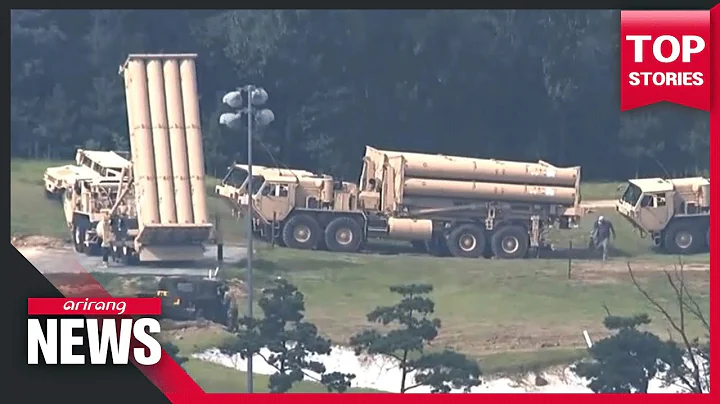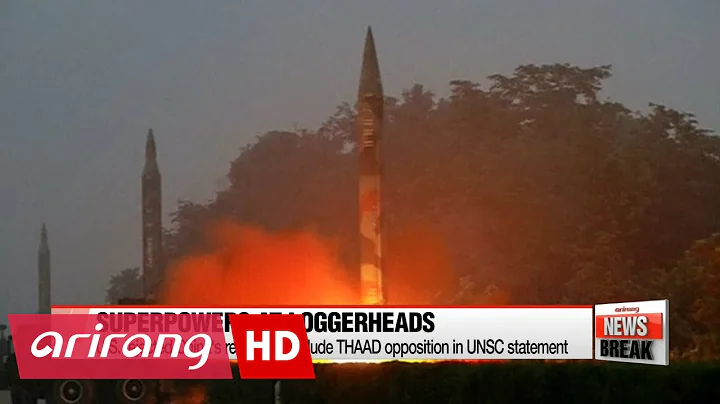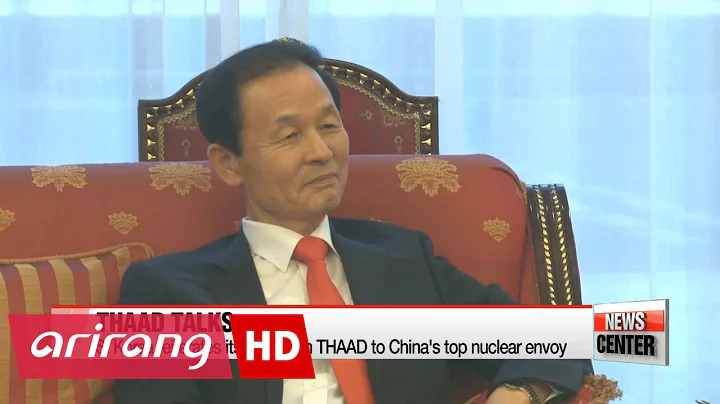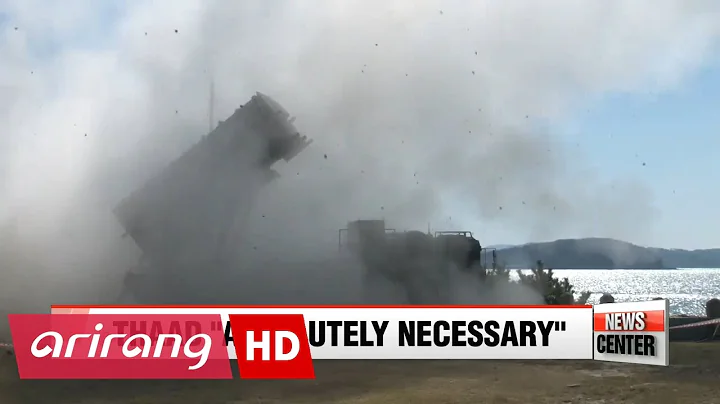" thaad " has been deployed in South Korea. As early as September 2017, the six THAAD launch vehicles deployed in South Korea had already entered operational status. However, on November 22, 2017, the foreign ministers of China and South Korea held talks in Beijing and reached a consensus, namely South Korea's "three no-one limits" commitment. : Do not consider adding the THAAD system , not joining the US anti-missile system, not developing a trilateral military alliance between South Korea, the United States and Japan, and restricting the use of "THAAD" in order not to harm China's strategic security interests.

But now, South Korea has "changed its face" again!
The South Korean Ministry of National Defense recently stated that South Korea is forming the "THAAD Environmental Impact Assessment Council". After the council is established, the Ministry of National Defense will go through relevant procedures. After the Ministry of National Defense and the Ministry of Environment reach an agreement on the assessment results, Environmental Impact Evaluating is now complete. This also means that the deployment of South Korea's "THAAD" system has once again been put on the agenda. Today, we will analyze in depth the significance of South Korea’s deployment of THAAD.
Before that, let’s first understand what the “THAAD” system is.
The THAAD system is a plan proposed by the United States in 1987. The original full name was the "Theater High Altitude Area Defense System". It was originally the anti-missile system planned by the US Army to intercept and shoot down short-range, medium-range and long-range ballistic missiles. .
From a time perspective, the concept of THAAD was proposed before the Gulf War . At that time, the former Soviet Union sold a large number of "Scud" short- and medium-range ballistic missiles to some countries. This kind of missile is cheap and extremely lethal. The most important thing is that ordinary air defense missiles are difficult to intercept. Therefore, when the Gulf War started, the United States took out its own precious "Patriot" defense missiles, combined with the US military's original air defense missiles, and intercepted most of the Iraqi Scuds.
But as the war continued, the United States discovered the shortcomings of the "Patriot" anti-aircraft missiles.
means that the defense area is small and the speed is not fast enough to intercept the ballistic missile with a longer range and faster speed. At the same time, if the enemy uses weapons of mass destruction, such as nuclear warheads and chemical warheads, the shortcomings of being unable to intercept in higher spaces will be magnified to the extreme, eventually leading to the possibility of being unable to intercept at low altitudes. Even missile fragments from an interception can cause damage to personnel and assets on the ground.
In order to solve these problems and achieve effective interception of medium-range and long-range and intercontinental missiles, after a series of complicated submission design plans, the United States almost "mobilized the entire country's military industry" and spent billions of dollars. Under the management of the U.S. Missile Defense Agency Next, in an attempt to achieve a big "breakthrough" in technology.
In the end, THAAD conducted its first flight test in April 1995, and completed the display and verification of the entire flight section at the White Sands Missile Test Range. But it was not until 1999 that THAAD achieved its first successful continuous interception test. Subsequently, in 2004, the US Army redesigned it and renamed it " terminal high-altitude area defense system ". And in 2007, it successfully completed an extra-atmospheric interception test. At this point, the THAAD system has entered a new stage of development.
Specifically, the THAAD system has two "magic weapons."
is first of all a high-speed and powerful interceptor missile. is 6.17 meters long, has a maximum diameter of 0.37 meters, and a maximum speed of 2500 meters/second. At the same time, it is composed of a booster, a kinetic energy interceptor (KKV) and a fairing . infrared imaging and homing terminal guidance can be used, which can identify, lock and directly collide with and destroy the warhead of a ballistic missile.
This is a breakthrough change in traditional interception, breaking the situation that if the interceptor missile of the nuclear warhead explodes over the country, it will cause serious losses to the region. The kinetic energy interceptor of the "THAAD system" can destroy the opponent's missiles only by collision. More importantly, it can intercept a nuclear ballistic missile at a higher altitude, so the harm caused will be much less. It can help it deal with more types of ballistic missiles.
In summary, the missile has a long range and a large protective area.
The second is the "powerful" radar system.
The THAAD system uses an X-band radar with a shorter wavelength. With continuous improvement, the THAAD radar can be used as a forward-deployed sensor to achieve early warning of intercontinental ballistic missiles . From the function of radar , short-wave radar can see more clearly, but the effective coverage distance is small; long-wave radar has large coverage, but the view is not very clear. Therefore, the AN/TPY-2 radar belonging to the X-band can track and identify incoming warheads with very high resolution. As for the importance of the radar detection system, I need not emphasize it. In the previous article "U.S. Military Aircraft Sailing through the Taiwan Strait ! How will future wars be fought? The article "Analysis of China's "Not Afraid of Trouble"" contains a detailed analysis of land-based mid-course anti-missile interception technology. The core point of
is that due to gravity, when the incoming missile head is about to reach its destination, its speed becomes faster and faster as the altitude continues to decrease. The relative speed between it and the interceptor missile taking off from the ground is very large, making it very difficult to accurately collide. At this time, precise radar guidance and other identification and judgment capabilities are needed. After understanding the functions of
, next, let's analyze in detail what threats the deployment of the "THAAD system" will pose to our country's security? Mainly focus on the following two points.
First, monitor Chinese missile activities and obtain Chinese missile data.
The maximum detection range of the THAAD system's radar is about 2,000 kilometers. If deployed on the west coast of South Korea, not only Shanghai, Tianjin, Dalian , where China's core military facilities are located, but also almost the entire developed areas of China's eastern coastal areas will be covered by it. Guilty. By then, as long as China launches intercontinental ballistic missiles (ICBM) and submarine-launched missiles (SLBM), they will be detected in the early stages of launch.
At the same time, if China launches missiles in North and Northeast China, they will be accurately captured by the AN/TPY-2 radar in South Korea without basically leaving the atmosphere. It can detect flight parameters in peacetime and provide information for other anti-missile systems in wartime. Early and accurate warning can significantly reduce the suddenness of China's ballistic missile strikes.
And, there is a more insidious point: if THAAD surveillance data is transmitted to other ballistic missile defense systems used to protect the United States, targeted defense can be better achieved. In fact, one of the tasks of the THAAD system is to defend against possible North Korean intercontinental ballistic missiles targeting the United States.
Of course, some friends may be confused. The United States has deployed a THAAD missile battalion in Guam , and also deployed AN/TPY-2 radars in Chali, Japan and Kyotango City in Kyoto Prefecture, plus other locations in the Pacific Theater. Deployed a series of shipborne radar and large land-based radar. So what will be different about THAAD deployed in South Korea? To put it simply,
allows Americans to track missiles launched by China earlier. If the AN/TPY-2 radar is deployed closer to China, the missile can be detected earlier before the missile body and warhead are separated, giving the United States more time to prepare for defensive interception. In front of missiles, accuracy and time are life!
Second, strategic stability has been broken.
We have always emphasized the "half-crossing and striking" state, which is most beneficial to China. But everyone has also seen recently that the United States and the West have been trying to drag China down and block our development through their familiar tactics of "colliding with porcelain."
Specifically, the key to the "nuclear strategy of self-defense" that China has publicly declared since 2006 lies in its reliable secondary nuclear strike capability . If the enemy is not sure to completely eliminate China's nuclear retaliation capabilities in a preemptive strike, and China is able to break through the opponent's anti-missile interception and deliver nuclear weapons to the enemy's territory after withstanding the first nuclear strike , then China There is no need to launch a pre-emptive strike in a crisis.
The "THAAD system" gives the United States an advantage, thereby breaking this balance. As mentioned above, once one side's shield can completely withstand the other side's spear, it will fall into a state of strategic imbalance. This is essentially the loss of strategic stability between China and the United States.





















